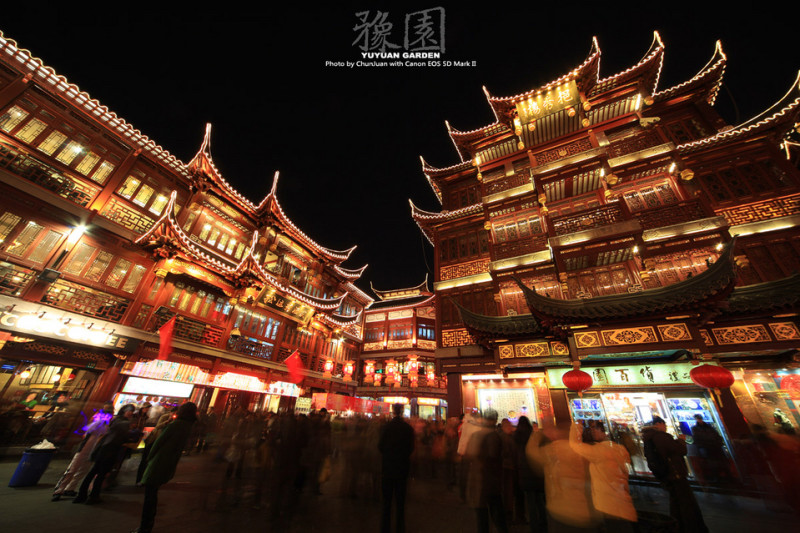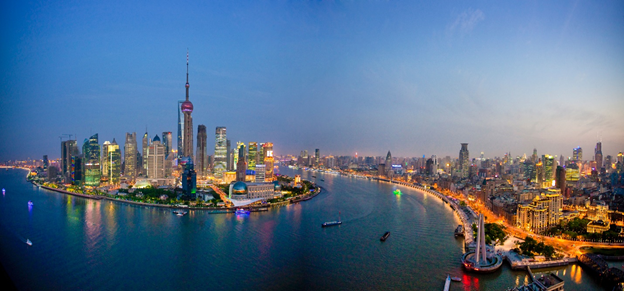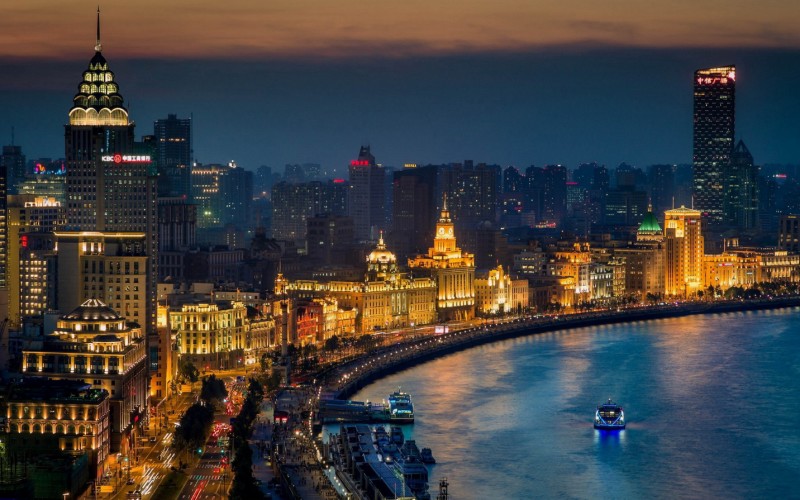January 30th, 2016 |
Published in
CCFSO by admin
Do you love to see gardens with red pagodas by the water? Visit Yuyuan. It’s a place where a series of beautiful traditional buildings take up a whole city block. The buildings are visited by thousands every day and fortunately very well maintained. The place is so big! It’s fun to explore every path, alley and corner! There are many things to try at Yuyuan. There is a variety of street food to sample. For the more curious travelers, try the flower syrup treats, ready to be sold by weight. Discover the solid perfume Shanghai ladies would wear in the 1950s. Buy some opera souvenirs to bring home. At night, take the time to enjoy the lights that decorate the buildings. It’s a fantastic scenery at night. Bring your best camera!
Shanghai, Yuyuan Garden

January 29th, 2016 |
Published in
CCFSO by admin

Shanghai, the Bund at night
The words I’m trying to find to describe Shanghai don’t to do it justice. It’s a really big city; big enough to house 24 million people. It’s also a very beautiful city; known as the Pearl of the Orient and Paris of the East. It’s a welcoming city with the capacity to accept new things. A World Expo was held there. If you’re looking for the best of something, you will likely find it in Shanghai. The word for I’m looking for could be metropolis, where the best of old and new is intertwined as a cohesive one. Walking down the street and around every corner, you’ll find convenient shops and lively people. Shanghai’s vitality will inspire you to discover and try something new. Next week, we will take you on a tour of this wonderful city.
By – Tracy Tian
January 23rd, 2016 |
Published in
CCFSO by admin
This week, we will talk about the Chinese solar terms in winter. The six winter solar terms are: Li Dong (“Beginning of Winter”), Xiao Xue (“Minor Snow”), Da Xue (“Major Snow”), Dong Zhi (“Winter Solace”), Xiao Han (“Minor Cold”), and Da Han (“Major Cold”).
As the first winter solar term, Li Dong begins early on November 7th. Xiao Xue is the second term, beginning on November 22nd. In Chinese agriculture, farmers believe that snow fall during Xiao Xue is beneficial to the crops. This has led to the creation of a number of proverbs. Da Xue arrives on December 7th and is indicative of an increase in snowfalls. The 4th term, Dong Zhi, starts on December 22nd. Xiao Han follows Dong Zhi on January 5th, and Da Han ends the winter solar terms starting on January 20th. Both Xiao Han and Da Han represent frosty weather.
For Chinese people, the most important winter solar term is Dong Zhi. Since the Qin Dynasty (from 221 BC), Dong Zhi signifies the beginning of the New Year and the start of a new cycle of seasons. Dong Zhi is celebrated in many regions of China by eating special, traditional dishes beneficial to one’s energy. Generally speaking, Northerners prefer to share a meal of dumplings, while Southerners favour Tangyuan, a type of glutinous rice balls. Other common food items part of a Dong Zhi menu include rice wine and mutton soup. Chinese people believe that these food serve two functions. First, they ward off the cold weather. For instance, in some regions, people believe that eating dumplings will grant them “spare ears” if their ears are bitten by frost. Second, traditional Dong Zhi dishes are thought to fend off evil spirits. In parts of China notably, sticky rice with red beans is eaten to fight the plague.
By- Nancy
January 16th, 2016 |
Published in
CCFSO by admin
Post 2 Shanghai – Night at the Bund
Have you seen the Bund at night? Shanghai’s skyline at night is second to none in the world. Take a cruise on the Huangpu River to enjoy the night scenery along the Pudong District and the Bund’s shore. On the Bund side of the river, majestic buildings rich in history were erected by many Western countries between 1850 and 1940. During those years, Shanghai was made land available for rent by the Qing Dynasty government. The British, French and Americans were the first to invest and build on their respective land in Shanghai. The distinctive architectural details are now highlighted by colourful projector lights. On the Pudong side of the river, there lies a stunning contrast. A new business district has developed to satisfy the need for expansion. Skyscrapers reach new heights, towering side by side and loaded with digital screens from top to bottom displaying the energy of the futuristic city of your dreams. Only, you realize that the future is here, now.
Shanghai, the Bund at night

January 9th, 2016 |
Published in
CCFSO by admin
“I love China!” “China is fascinating!” “I love Chinese food!” “I love pandas!” No Chinese junkie can ignore the exotic and mysterious beauty originating in this Eastern country. But do you want to know more about China? Do you want to show your love of China and Chinese culture (and impress your Chinese friends, of course!) with new fascinating facts?
This new blog series, written by a CCFS-O volunteer, will introduce you to a fundamental aspect of Chinese culture: the idea of solar terms and associated Chinese festivals. We will help you learn about what’s behind Chinese thinking add a little spice to your next trip to China!
By Nancy


